Kidds Creek
Revitalization Project
We’re working in collaboration with the City of Barrie to revitalize Kidds Creek, one of the most vital creeks flowing through Barrie. Unfortunately, this once pristine cold-water creek is in poor condition as a result of rapid growth and development practices of the past.
What’s the problem?
Sections of the creek have been channelized and piped underground. Erosion along the streambank is causing poor water quality and transporting nutrient laden sediment downstream. Many of the engineered stream channelized sections constructed in the 1980s have failed. These conditions have led to unstable banks, with sediment blocking downstream fish habitat.
Within the past 10 years, the City has completed temporary repairs to the creek to protect municipal infrastructure. But all this work was a temporary fix for a long-term problem.
Restoring the Creek
5 years ago, we formed a partnership with the City of Barrie’s Stormwater Engineering Department. Together, we will complete a holistic restoration that revitalizes the creek and the land that surrounds it.
The first steps involved completing a full hydro-geomorphic assessment and channel survey to study the upper reaches of the creek. This helps us maintain the ecological integrity of the creek and avoid ineffective spot repairs. This two-year study began in 2015 and included hydrology, topography, natural heritage, Species at Risk, and fluvial geomorphology, resulting in the development of a design for the entire Upper Kidds drainage area.
Study Findings
One of the issues identified in the study is that the creek has already reached its upper threshold for thermal regulation. This means that the fish population downstream of Hwy 400 can’t tolerate even a small increase in temperature. The new creek design will help support cold water fish (like brook trout), by incorporating new habitat features like riffles, pools, woody material, and a meandering flow downstream.
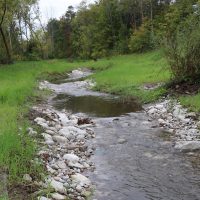
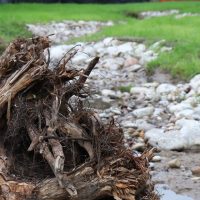
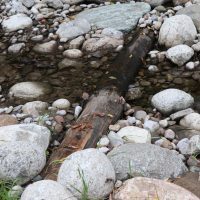
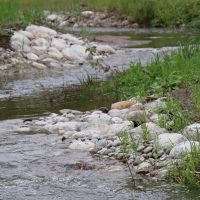
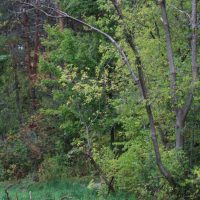
Project Details
We’re currently restoring over 560 metres of the upper reaches of Kidd’s Creek! In order to restore the creek using natural channel design, the site had to be regraded to allow the creek to meander and spill over its banks during larger rain events. 2,000 cubic metres of the total 2,300 of material removed was reused on-site through the creation of various knolls and berms.
Before the project started the creek was deep and narrow which created the perfect tunnel for fast flowing water, inevitably flooding during large rain events. The revitalized creek is wide and shallow, with a few deeper pools as resting spots for fish.
The trees were cut during the winter months (to avoid the bird nesting season) and 56 trees were re-purposed in the creek channel design as root wads and log cross vanes.
Most of the construction will be completed by mid-September 2019, including the planting of 2,000 trees and shrubs. An additional 350 plants to be planted in the spring of 2020 as part of a community tree planting event.
The revitalization of this creek included removing all urban structure with naturalization, incorporating materials previously on site. The phased approach to this project represents a positive shift in the way that the City undertakes works on creeks – the goal is to find the best ecological fix for the creek, with a proactive and holistic approach.
Words to know
This term refers to the amount of warm water entering the cold water stream. This can be caused by rain water hitting a dark asphalt parking lot draining directly into the creek.
How the land forms (at and below the surface) with the interaction of water flow.
The study of how water flow changes the lay of the land. (how a creek decides where to flow and when to turn).
They involve the installation of tree log sections at various points along the creek as a grade control. It’s a great way to re-purpose trees that need to be relocated.
Root wads are used to protect the outside bends of creeks from erosion and create a shaded area for fish habitat. The tree stump and its roots are placed along the bank of the creek and 2-3 metres of the tree’s trunk is anchored into the creek bank. It’s also another great way to re-purpose trees that need to be relocated.
Small hill or mound.
![]() Who to Contact
Who to Contact
Restoration
✆ 905-895-1281
✆ 1-800-465-0437 Toll free
✉ restoration@LSRCA.on.ca
